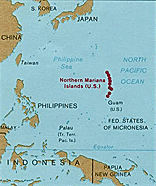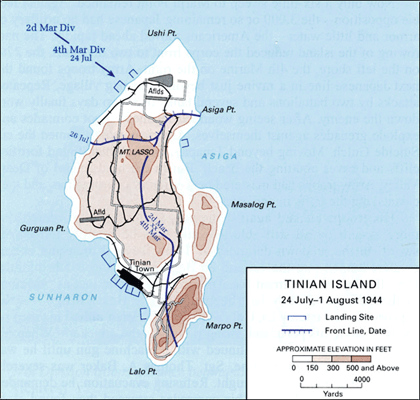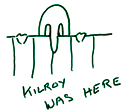| Join | Official Historian | City of Stamford | Blog | About Us | |
| Jewish Historical Society | Civil War Roundtable | Contact Us | |
|
|
|
|
The Stamford Historical Society PresentsPride and Patriotism: Stamford’s Role in World War II
|
 large map of Mariana Islands |
The Battle of Tinian was fought on the island of Tinian in the Mariana Islands from 24 July to 1 August 1944. The island is about 40 square miles in size. During the battle napalm was used for the first time. Of 120 tanks jettisoned during the operation, 25 contained a napalm mixture and the remainder an oil-gasoline mixture. The tanks were carried by Thunderbolt (P-47s) and the ‘fire bombs’ burned away foliage that concealed enemy fortifications. The invasion of Saipan to the north marked the beginning of an almost daily aerial bombardment of Tinian from U.S. warships and planes. The American forces were comprised of two Marine divisions under the command of Harry Schmidt, while the Japanese forces were under Kiyochi Ogata. The Japanese had 4700 Soldiers and 4110 Marine Soldiers. The U.S. Marines secured the island and were helped by Army aircraft, artillerymen, amphibian vehicles and engineers.
 The taking of Saipan by US forces made Tinian, only 3.5 miles southwest of Saipan, the next logical step in the Marianas. The 2nd and 4th Marine divisions were landed on 24 July 1944, while the naval forces bombarded the island and artillery was fired across the strait from Saipan. The Japanese were tricked into thinking the main assault was at San José Village, while the actual landing site was on the northwest side of the island.
The taking of Saipan by US forces made Tinian, only 3.5 miles southwest of Saipan, the next logical step in the Marianas. The 2nd and 4th Marine divisions were landed on 24 July 1944, while the naval forces bombarded the island and artillery was fired across the strait from Saipan. The Japanese were tricked into thinking the main assault was at San José Village, while the actual landing site was on the northwest side of the island.
During the Battle of Tinian the Japanese resorted to the same tactics they had used at Saipan, retreating during the day and attacking at night. Tanks and artillery could be employed more successfully owing to the more gentle terrain on Tinian. After nine days of fighting the island was secured by U.S. forces. On 31 July the Japanese launched a suicide charge resulting in many casualties.
Several hundred Japanese held out in the jungles for months and the garrison on Aguijan Island of Tinian’s southwest cape, commanded by Lt. Kinichi Yamada, did not surrender until 4 September 1945. The last Japanese defensive position on Tinian, Murata Susumu, was not captured until 1953.
The American forces numbered 389 killed and 1816 wounded. Japanese casualties were enormous with 6050 killed, 236 POWs and 2500 evacuated. After the battle B-29 Superfortress bombers were stationed at Tinian and were responsible for the strategic bombing of Japan, mainly with incendiary bombs and later the atomic bombs “Little Boy” and “Fat Man,” dropped at Hiroshima and Nagasaki. Tinian became a key base for Allied operations with camps built housing 50,000 troops. 15,000 SeaBees turned the island into the busiest airfield of the war with six 2400m runways for B-29 Superfortress bombers.
Chet Buttery served on Tinian later: oral history interview.
Battle of Tinian
The Seizure of Tinian USMC, with many maps and images!
The Tinian Landing Beaches
Pacific and Adjacent Theatres 1943 (map)
 Introduction
Introduction
Veterans
Battles
Stamford Service Rolls
Homefront
Exhibit Photos
Opening Day